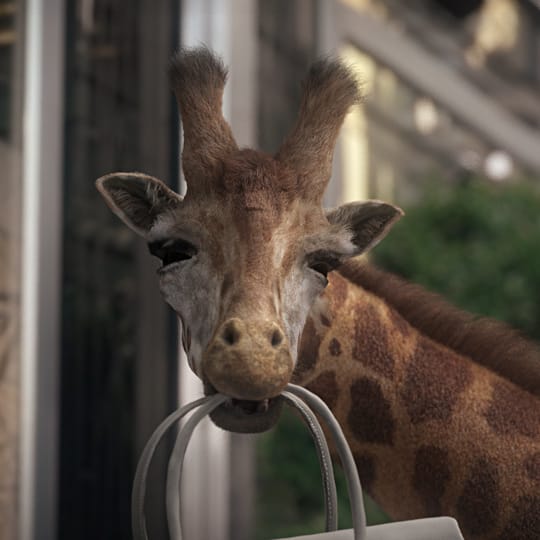CG artist and journalist Lidija Grozdanic interviewed DBOX Senior Partner Keith Bomely about their campaign for Macklowe Properties’ 200 East 59, a 35-story residential building overlooking New York's Central Park. Still images from the same project recently won the architectural visualization studio a Golden Medal of Montreaux 2018 in the Corporate Image category.
How did you get involved with 200 East 59?
About a year ago, we were asked to produce some content, and that evolved into a social media campaign. We started off modestly, with a few short animations. Somehow this grew into an elaborate live-action shoot of life-size animal sculptures being paraded around Manhattan, and a two-minute marketing film. The majority of the CG production took place over the course of two months, but the live action took place last summer.
Who came up with the concept?
The idea of using wild safari animals came from our client, Harry Macklowe, who wanted to explain how large the apartment’s terraces are. He said: “They’re huge! You can fit an elephant out there!” I could immediately see the idea of using animals a great way to communicate the building’s key differentiator (large terraces with every apartment), but also a way to make a campaign that would stand out in the crowded field of Manhattan real estate. There are so many buildings fighting for the attention of a finite audience. If you stick to the formula you will get lost in that crowd. A giraffe eating your terrace plants is more likely to get attention than a couple holding glasses of wine.
We knew it was an idea we could have fun with. We could layer in references to culture and art. Much of it is tongue-in-cheek and kept from being too earnest. Our client understood and pushed for comedy, as a way to engage with the audience. And it gave us an opportunity to work outside the confines of the very serious world of Manhattan real estate.
The music is an intrinsic part of the campaign. How did you choose it?
“I’ll Be Seeing You” wasn’t actually our first choice of song. We started with “The 59th Street Bridge Song.” So much about that made sense, the happy-go-lucky mood, the fact the building is on 59th Street, in view of the 59th Street Bridge. We made a rough edit using hand-drawn storyboard frames and live-action footage to get that choice of song approved by the client. However, two factors worked against getting an approval: the song had a fast tempo that required quick cuts that proved to be too fast for our client, and the license was going to blow the entire budget for the film. We had to go back to the drawing board.
The client had a deep musical knowledge, but his era of acceptability has a cutoff point somewhere in the ‘70s. Working within that range we were able to listen to a number of tracks together and land on “I’ll Be Seeing You.” It’s a widely known standard and Jimmy Durante’s version is particularly heartfelt. I liked the idea that we could juxtapose playful and sometime humourous visuals against a somewhat melancholy soundtrack. I think that sort of opposition worked.
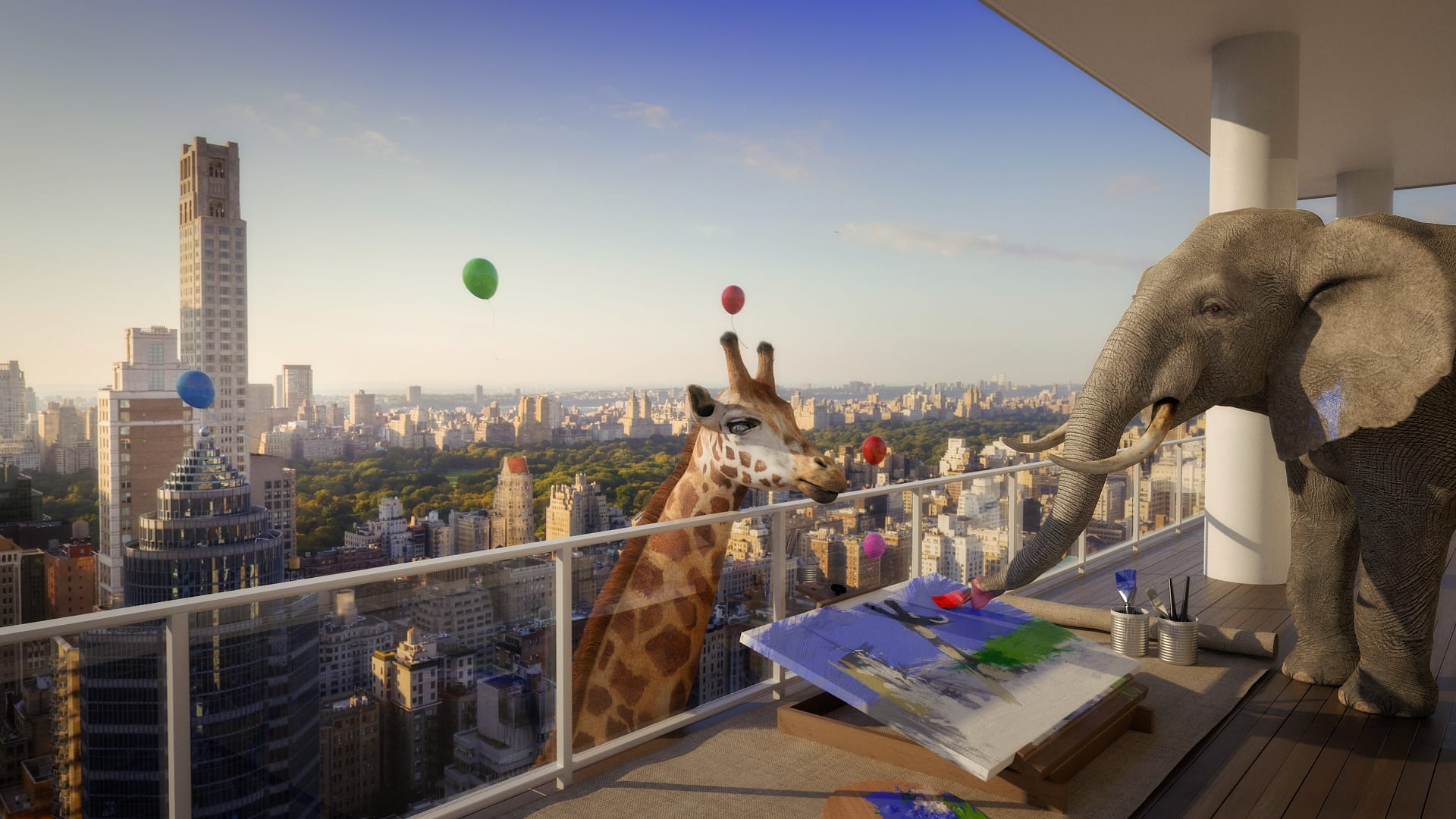
The live action shoot sounds like it was pretty fun! How did it come about?
As the project grew we knew we would make a marketing film, and the client had the idea of buying life-size fiberglass sculptures of animals. Initially, they were meant to go into the sales gallery, but the scope quickly ballooned into parading these huge animals all over Manhattan! We were then asked to capture the entire experience on video. It’s hard to believe how a simple idea on paper becomes such a complicated jigsaw puzzle of a production.
We had to enlist the help of producers, coordinate with a trucking company, negotiate with several municipal agencies, get the sculptures from a shop in the Hamptons, create banners for the trucks. It’s a maze to navigate, given the city’s one-way streets and restrictions on commercial vehicles. I learned that there is a 13’6” height limit on moving vehicles in Manhattan, so we had to find a special low trailer so that the giraffe wouldn’t get decapitated along the way. We had a couple of close calls with low hanging branches!
The whole production had about 6 camera operators (some of whom were also working on the CG shots), a camera car, a couple of vans, two large pickups with animal trailers in tow, and a police escort. We looked for any opportunity to get a good angle, even trying to time the 59th Street Bridge crossing with the Roosevelt Island tram. We were able to stop in front of several New York landmarks.
At a few locations, there were models and influencers hopping on the back of the animals for a photo op. Once they were done it was kind of a free-for-all with kids, tourists and New Yorkers jumping up on the trailers and getting their Instagram posts. While en route, there was a lot of honking and cheering. Towards the end of the day, though, the police escort’s patience was running thin and we were allowed to do less and less. The police can, at any moment, halt the whole production so we had to follow along. Pretty stressful but, overall, a fun day.
In the end, we edited out most of the parade footage. We streamlined it to keep the time down for the sake of the audience’s attention span. Editing requires you to “kill your darlings” as they say.
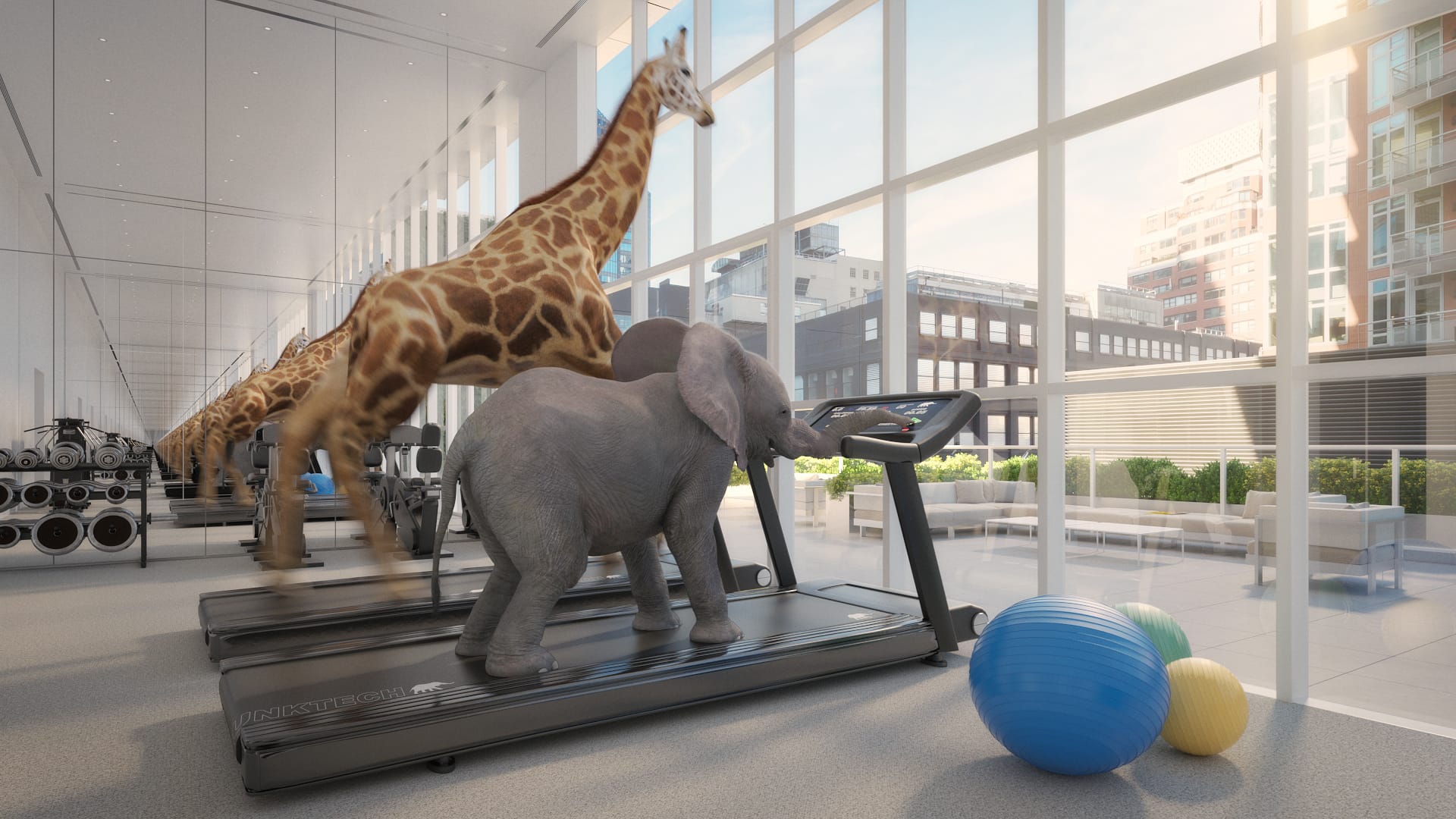
Did you enjoy working on the project overall?
Collectively, we enjoy ideas that push us out of our comfort zone both creatively and technically. The team really got into it and were able to solve some really weird problems and answer some unusual questions — like, what does an elephant fart sound like?
We aren’t Pixar or ILM. We don’t have large teams or Hollywood budgets, so we need to be smart about ideas and production. We are always conscious of the labor-versus-payoff ratio and constantly push for the most proverbial “bang for our buck.” It’s easy to get lost in a detail that you are trying to perfect. I wish we had the time and budget to perfect everything. You have to keep your eye on the big picture and know that the quality bar needs to be high throughout. Having said that, I have a hard time looking at our work and not seeing how it could be better.
The first series of animated clips we made had a stop-motion effect, because we were concerned that we wouldn’t get the movement exactly right. The funny thing is that, even with that effect and the anthropomorphic activities, when we posted on social media we would get comments like “Shame on you for endangering that poor elephant! What if it slips on the stone and falls into the glass?”
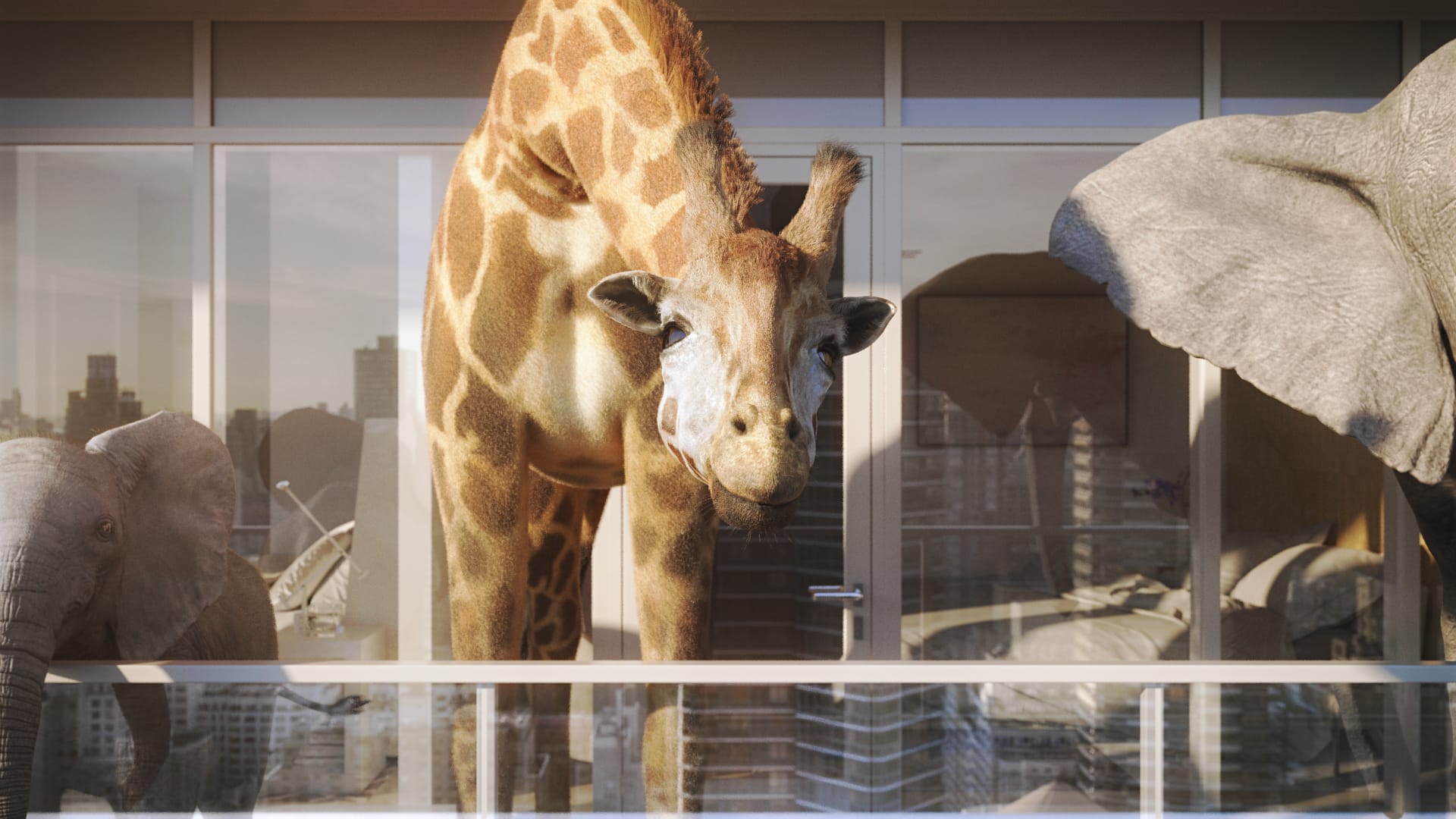
Did you do anything new technically on this project?
We’ve been using V-Ray with 3D Studio Max for many years. One of the changes in workflow that we have been making recently is to render off-site. We have a large in-house render farm in New York, but there is so much production happening at any given time that we can’t clog up the queue with thousands of animation frames. A huge help was the recent improvements in brute force rendering. The speed increases, without having to pre-cache, allowed us to send our scenes to cloud computing services more easily, and get them going with reliable and predictable render times. By using brute force there was also less risk of animation flicker problems. We sent scenes in several passes so that we can run the more geometry-intensive layers separately, like fur.
Storytelling in an image should be in the service of a broader message about that particular project. We don’t necessarily think there is a need for an embedded narrative for its own sake. Every project has at least one characteristic that differentiates it in the marketplace and the story in a visualization or video needs to communicate those qualities. In the case of 200 East 59th Street the message is simple: the building has large terraces with every residence. That is unique in Manhattan. It’s not in a place like Miami. The animals make that point, but we extended it into a broader theme that encompassed the amenities and the landmarks of upper Manhattan.
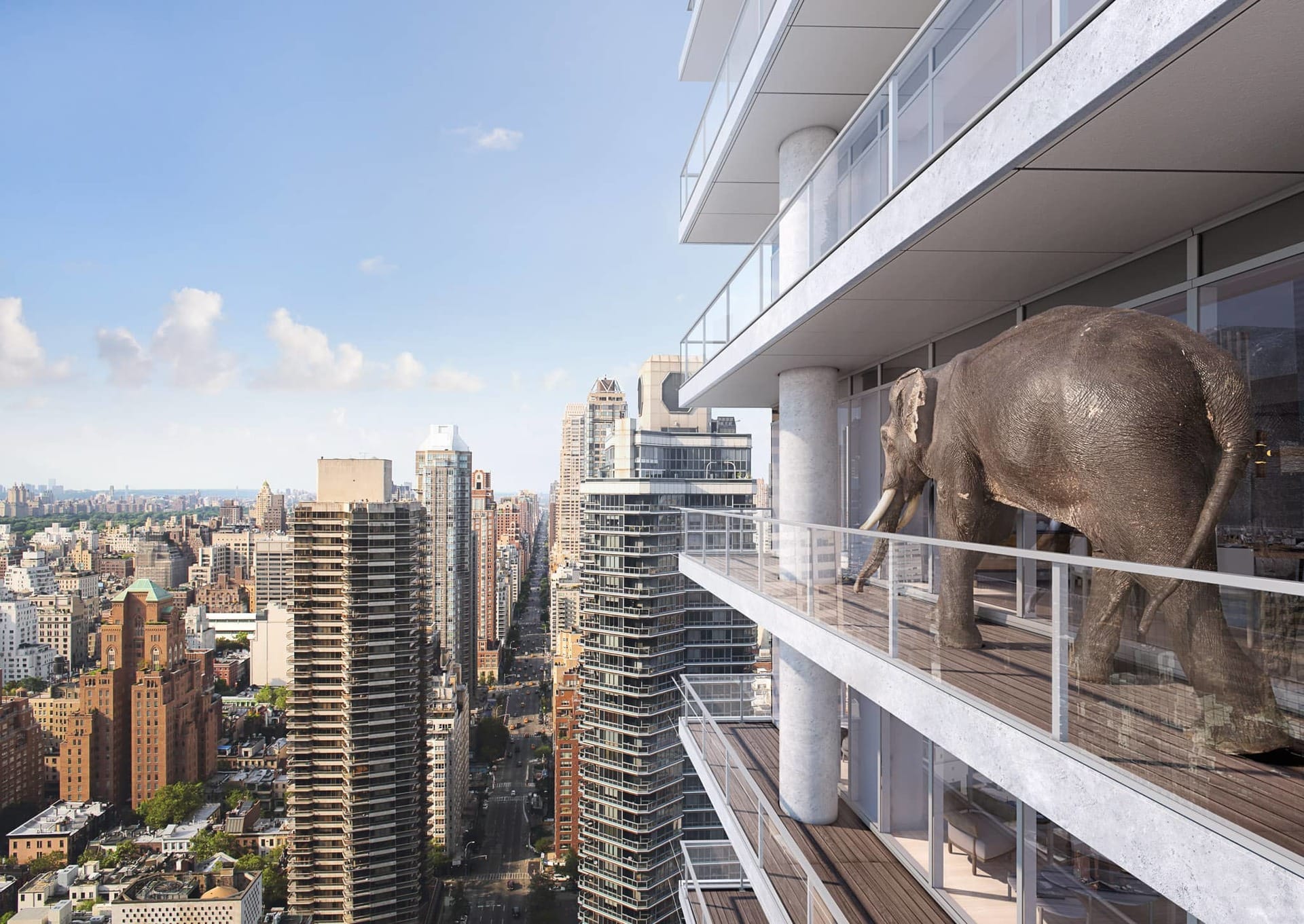
You’ve been creating CG for a while. What’s the biggest change you’ve seen?
The biggest industry shift we’ve seen since the mid-90s is that it is becoming easier to make visualization look realistic. At a certain point, realism won’t be where the value is — there will be a need for that ‘something else’ that makes imagery engaging and relevant. It helps to think of a set of images as a campaign rather than as isolated images. However, it’s impossible to predict the future. Before we started on the 60-plus CGIs of 432 Park Avenue, if you asked me which image of the set would go viral I would not put a bathroom at the top of that list.
What’s your advice for young studios looking to scale up?
Don’t do it! Just kidding. It’s something that should be taken seriously. You need to be very selective about who you hire. There are so many questions to consider but I would say the top is, “Is this a good person?” Some of us have been working together for 20-plus years. We have disagreements and arguments but at the end of the day we know that we all have a strong moral grounding and have each other’s interests in mind. That is in addition to all the other qualities you look for in a hire, talent, drive, experience, communication skills and the ability to work in a team. One wrong hire can have a disastrous effect on a studio.

